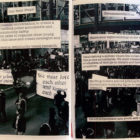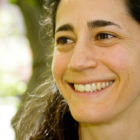
Why Teenage Christian Picciolini Joined, Then Quit White Power Movement
|
Christian Picciolini, 14, was hanging out one day in an alley near the intersection of Union and Division streets in Chicago.
An older man with cropped hair and big shiny boots drove up.
He was warm and friendly, and he offered fatherly advice: Don’t smoke marijuana, he told Picciolini. “That’s what the Communists and Jews want you to do,” he said. He told Picciolini to be proud of his Roman warrior ancestors: They were a superior race, he said. The man was Clark Martell, a violent neo-Nazi who was later sentenced to prison for assault and robbery. But Picciolini was hungry for attention and he saw Martell as heroic.








